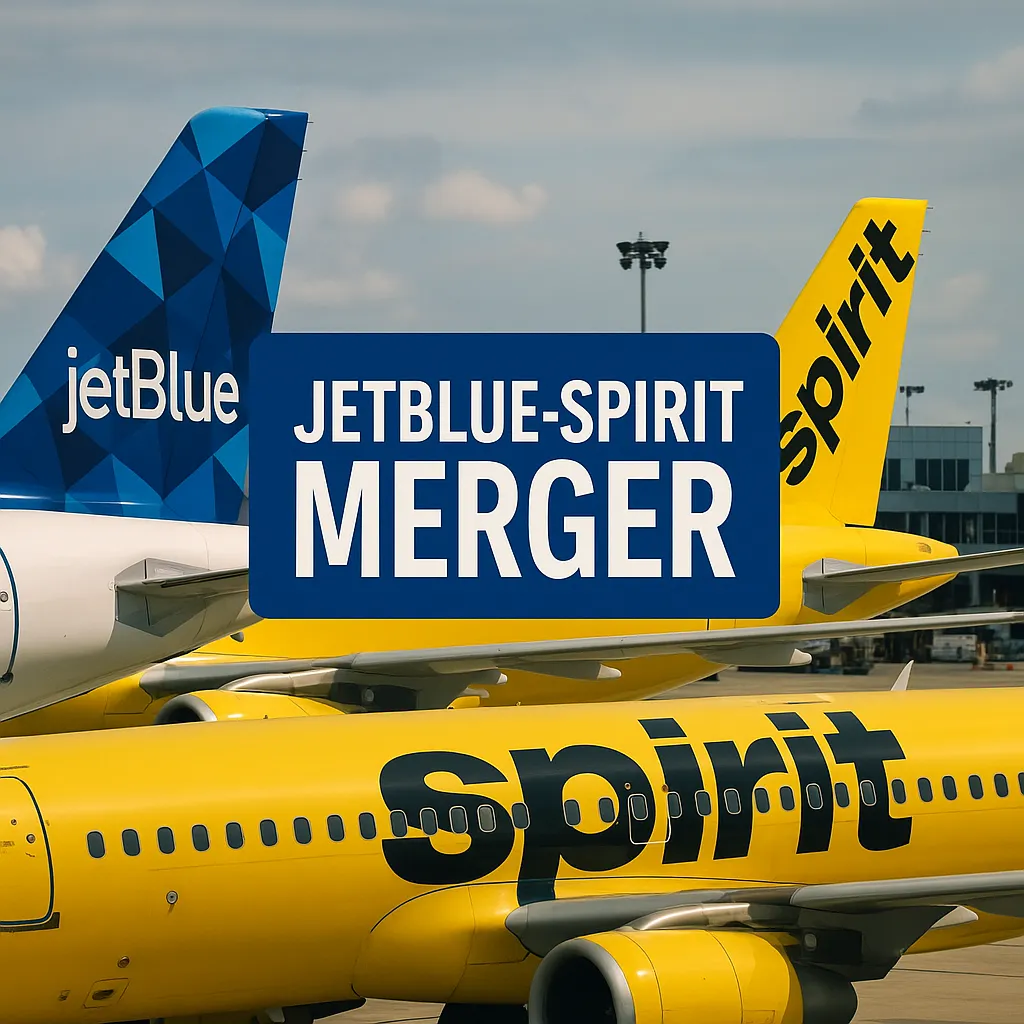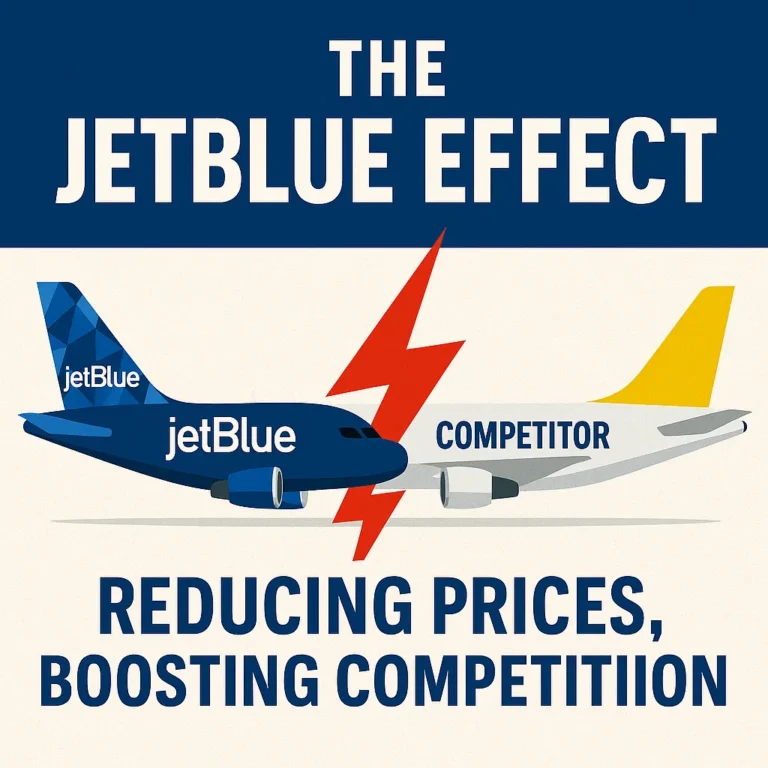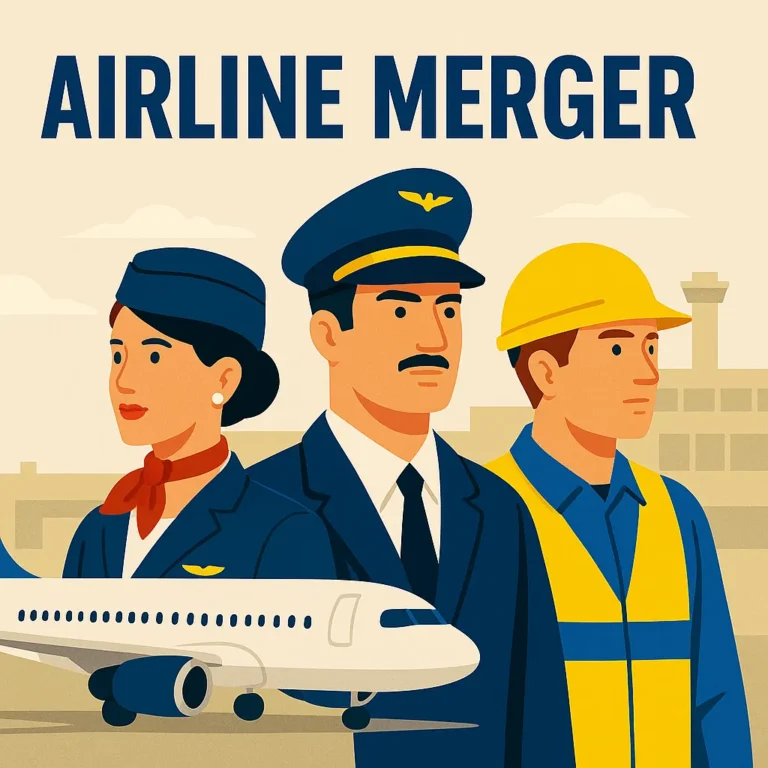When two major airlines join forces, it’s not just a business deal—it directly impacts millions of travelers. The merger between JetBlue and Spirit Airlines is one of the biggest shakeups in U.S. aviation in recent years, and it’s set to redefine how people fly, especially when it comes to routes, schedules, and service standards.
So, what can passengers expect once the dust settles? Will tickets get cheaper? Will direct flights become more common? And what about in-flight comfort—will it improve or take a hit?
Let’s break it down.
More Direct Flights, Less Time in Airports
One of the biggest wins for travelers is the potential for more direct routes between mid-sized cities. With a combined fleet and integrated route map, JetBlue and Spirit can now operate connections that weren’t previously viable for either airline on its own.
Here’s what that means in practice:
- Secondary cities will gain nonstop access to major hubs like New York, Los Angeles, Orlando, and Austin.
- Fewer layovers in major airport hubs—saving time, energy, and stress.
- Travelers spend less time navigating airport terminals and more time at their destination.
Example: Instead of flying Cleveland – Boston – Tampa, you might soon be able to book a direct Cleveland – Tampa flight.
This shift can make a big difference, especially for families, business travelers, and anyone tired of missing connections.
Expanded Coverage: New Cities on the Map
With new resources and shared logistics, the merged airline is now in a position to stretch its wings into fresh territory.
Here’s what’s changing:
- Entry into previously unserved regional markets, improving access in underserved areas.
- More frequent flights to popular regions such as Latin America, the Caribbean, and the U.S. West Coast.
- A stronger presence on international routes, thanks to consolidated flight rights and gate slots.
The result? New options for travelers looking to explore destinations that were once either inconvenient or too expensive to reach.
Increased Frequency = Greater Flexibility
The merged schedule doesn’t just offer more destinations—it also means more choices per day. Take a look at how flight frequency is expected to improve:
| Route | Before the Merger | After the Merger |
|---|---|---|
| Fort Lauderdale – Chicago | 2 flights/day | 4 flights/day |
| Newark – Las Vegas | 1 flight/day | 3 flights/day |
| Boston – Nashville | 3 flights/week | 7 flights/week |
With increased frequency, passengers benefit from:
- More convenient departure times.
- Less stress about delays and missed connections.
- Easier planning for peak-hour travel without inflated prices.
More flights mean more control over your schedule—a big plus for frequent flyers and spontaneous getaways alike.
Better Service Standards Are on the Horizon
Service upgrades are often where mergers get tricky, but in this case, JetBlue’s premium offerings are expected to raise the bar for the combined airline.
What’s changing?
- JetBlue’s signature perks—more legroom, free Wi-Fi, and in-seat entertainment—are expected to roll out across select Spirit-operated flights.
- Over time, core service standards may become more unified, especially on key routes.
- Passengers will be able to choose between minimal-cost “bare-bones” tickets or more premium packages offering added comfort and convenience.
This hybrid approach allows for flexibility without forcing all travelers into the same service model.
What Passengers Really Get
Here’s the bottom line for travelers after the JetBlue-Spirit merger:
More nonstop flights — Fewer layovers, simpler itineraries.
Broader destination coverage — Access to new routes and regions.
Higher flight frequency — More departure options and planning ease.
Enhanced comfort — Upgraded cabins and service, at still-competitive prices.
While corporate mergers are often framed in boardroom language, this one hits closer to home. For weekly commuters, occasional vacationers, or annual family travelers, these kinds of changes matter. Whether it’s shaving hours off a journey or having better options when booking a last-minute trip, the ripple effect of this merger is likely to improve everyday travel in a real, tangible way.



